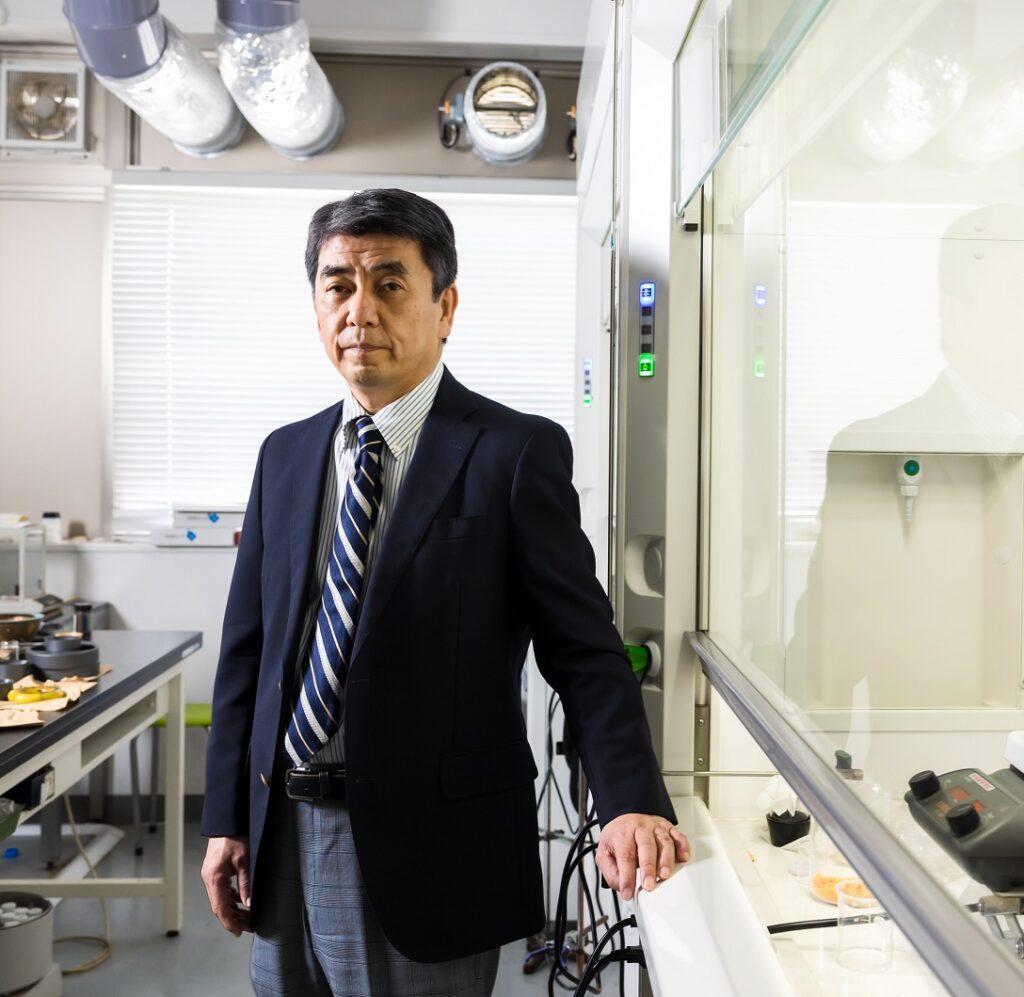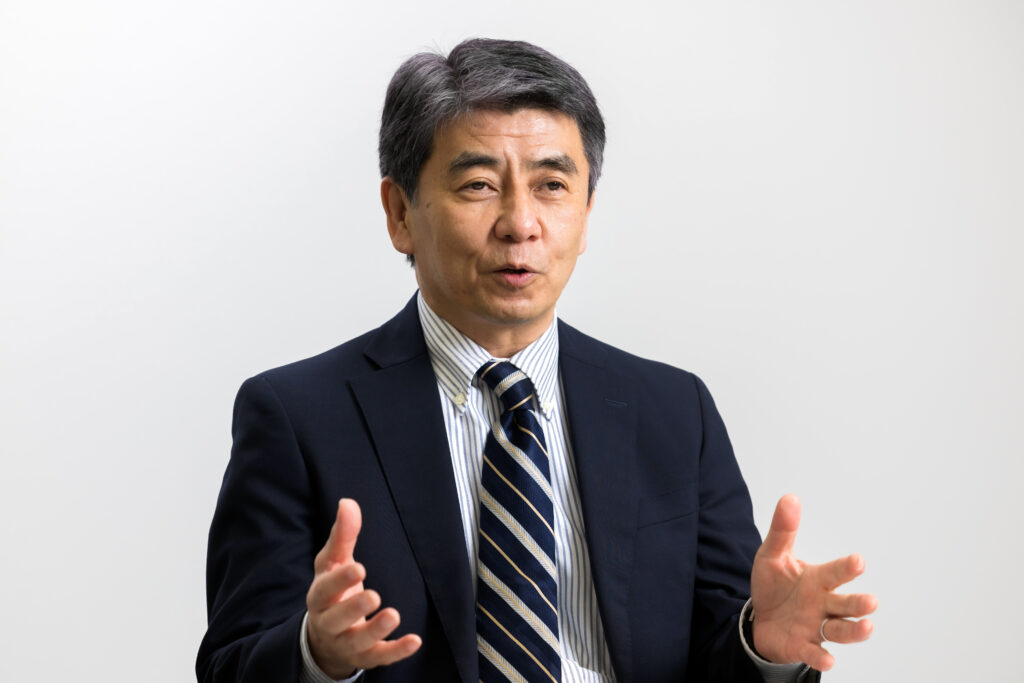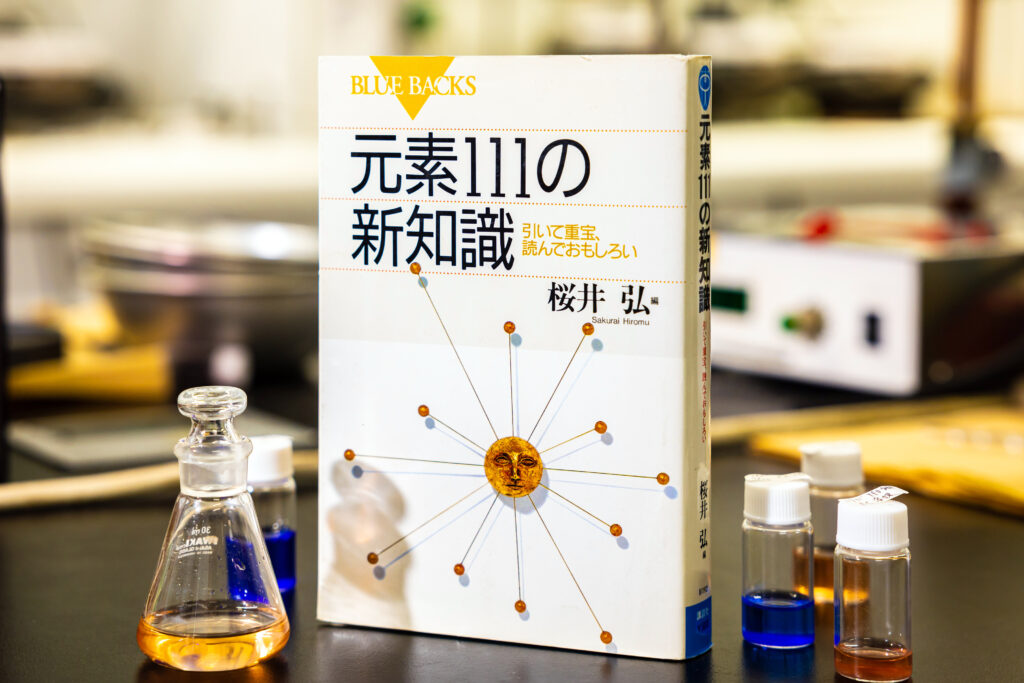
Professor Hirotaka Nagao of the Faculty of Science and Technology is an expert in coordination chemistry and bioinorganic chemistry. He researches processes to convert substances such as stable nitrogen compounds and CO2—which is a cause of global warming—into useful compounds.
My research is currently focused on nitrogen, which accounts for approximately 80% of the air we breathe, and carbon, which is a component of CO2. More specifically, I investigate ways of fixing nitrogen, which is essential to life, in nitrogen compounds, and of converting problem substances such as CO2 into useful substances.
Central to my research are transition metal complexes, which consist of metal and non-metal atoms bonded together and which possess unique structures and properties.
I use these transition metal complexes to form and break the chemical bonds in nitrogen and carbon molecules and ions in a process known as “redox” and so create high valuable compounds.
Drawing on diverse fields of chemistry, and learning from nature

Bioinorganic chemistry is a new field of research that seeks to understand the reactions that take place in natural life forms, and consider how they can be applied to useful artificial processes. For example, the only artificial way we have of converting nitrogen molecules—which abound in the air—into ammonia is the Haber-Bosch process.
While it is a superb method, producing ammonia via this method is extremely costly, due to the quantity of both energy and hydrogen it requires. But in the natural world, there are organisms called root nodule bacteria that live in the roots of legumes that convert air-borne nitrogen into ammonia easily.
Drawing on the approaches of bioinorganic chemistry, I carry out beaker-size experiments to convert nitrogen and carbon into useful substances using transition metal complexes.
As you can see, in my research I am required to make use of various elements from both bioinorganic chemistry and coordination chemistry. For this reason, I also involve myself in research that straddles various different fields.
Let us take the anti-cancer agent cisplatin as an example. Cisplatin is a platinum complex, and its mechanism of action has recently been understood through the prism of bioinorganic chemistry. I work together with my biology colleagues to answer questions such as “how can we eliminate side effects?”
Duty-bound to continue trying
The motto of my research group is to create from scratch something that has never been created before. Together with my students, every year I create 20 or so transition metal complexes; some of them we cannot find uses for, while others have already been reported.
But on rare occasions, we create something completely unexpected—something that causes a stir at academic conferences. When I bring out complexes we created 10 years ago, some of them receive a surprisingly positive reaction.
One of my research goals is to bring about difficult chemical reactions without using special apparatus or expending large amounts of energy. In my experiments, I only utilize readily available instruments, and operate between room temperature and 100˚C. Today, the global environment is a grave concern—and for me, it is non-negotiable to use the minimum amount of energy to produce the maximum effects.
If we can one day create automobile fuels by converting air-borne CO2 into alcohol, or by converting air-borne nitrogen into ammonia, then we can help realize a carbon-neutral society. For more than 100 years, countless chemists have sought to pioneer revolutionary methods of nitrogen fixation—which converts air-borne nitrogen into industrially useful nitrogenous compounds—but without success.
The level of difficulty is incredibly high, but it is something we are duty-bound to do—and so I will keep trying.
The book I recommend
“Genso 111 no Shinchishiki”(A new understanding of element 111)
by Hiromu Sakurai, Kodansha

This is a book I recommend to my students. It provides clear explanations of metals such as ruthenium, which is frequently used in scientific research but is little known to the public, and describes the properties of and uses for common elements. I guarantee it will kindle a fascination with chemistry.
-
Hirotaka Nagao
- Professor
Department of Materials and Life Sciences
Faculty of Science and Technology
- Professor
-
Received his Ph.D. from the Graduate School of Science and Technology, Sophia University. After working as an assistant at the Institute for Molecular Science, and as an assistant, lecturer, assistant professor, and associate professor at the Faculty of Science and Technology, Sophia University, appointed to his current position in 2010.
- Department of Materials and Life Sciences
Interviewed: June 2022